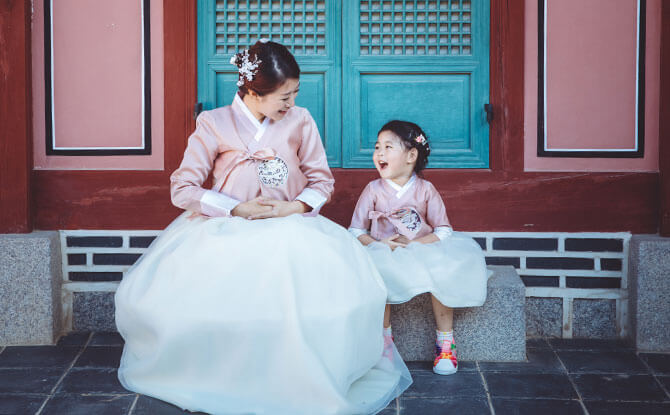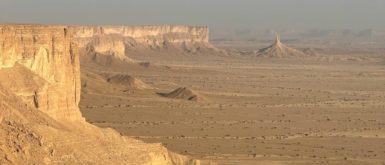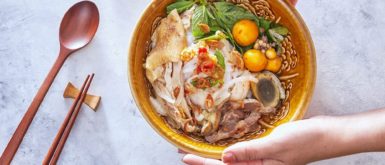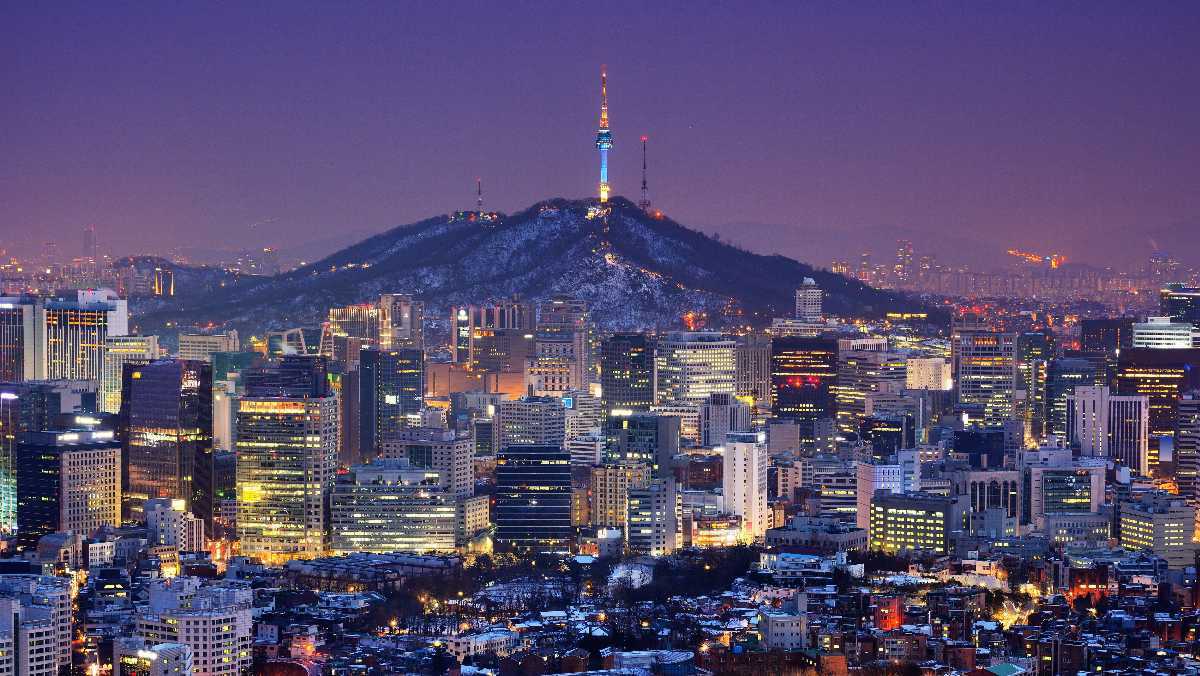 Seoul is a bustling metropolis that seamlessly blends modernity and tradition.
Seoul is a bustling metropolis that seamlessly blends modernity and tradition.
The capital of South Korea is home to over 10 million people and is a hub for business, culture, and entertainment.
From the towering skyscrapers to the ancient palaces, there is plenty to see and do in Seoul.
In this comprehensive travel guide, we will cover the must-visit attractions, local cuisine, transportation options, and accommodations to help you plan your trip to Seoul.
Table of Contents
- Best Time to Visit
- Best Areas to Stay
- How Many Days to Stay
- Attractions
- Korean Food
- How to Get Around
- Tips for Families Traveling to Seoul
- Day Trips
Best Time to Visit
The best time to visit Seoul depends on what activities and experiences you are interested in.
Seoul has a four-season climate with distinct weather patterns throughout the year, and each season offers unique advantages and disadvantages for travelers.
Spring (March to May) and Autumn (September to November)
Are generally considered the best times to visit Seoul.
The temperatures during these seasons are mild and comfortable, with pleasant daytime temperatures and cool evenings.
The cherry blossom season in April is a major attraction, with many parks and streets filled with blooming cherry trees, making it a popular time for tourists.
In the fall, the city is also awash with vibrant fall foliage, especially in parks such as Namsan and Bukhansan.
Summer (June to August)
Can be hot and humid, with temperatures reaching up to 35°C (95°F) during the day.
However, it is also the peak season for festivals and outdoor activities such as hiking, camping, and water sports.
The Seoul Lantern Festival and Boryeong Mud Festival are some of the popular events during this season.
Winter (December to February)
Is the coldest season in Seoul, with temperatures dropping below freezing and occasional snowfalls.
However, it is a popular season for skiing and other winter sports, and there are several ski resorts within easy reach of the city.
Additionally, the city is beautifully lit up with festive lights and decorations during the Christmas and New Year period.
Tourist Crowds
Another factor to consider when deciding the best time to visit Seoul is the tourist crowds.
Spring and Autumn are the peak seasons for tourists, and attractions such as Gyeongbokgung Palace and Namsan Tower can get quite crowded during this time.
If you prefer fewer crowds and lower prices, winter and summer are good options.
How Many Days to Stay
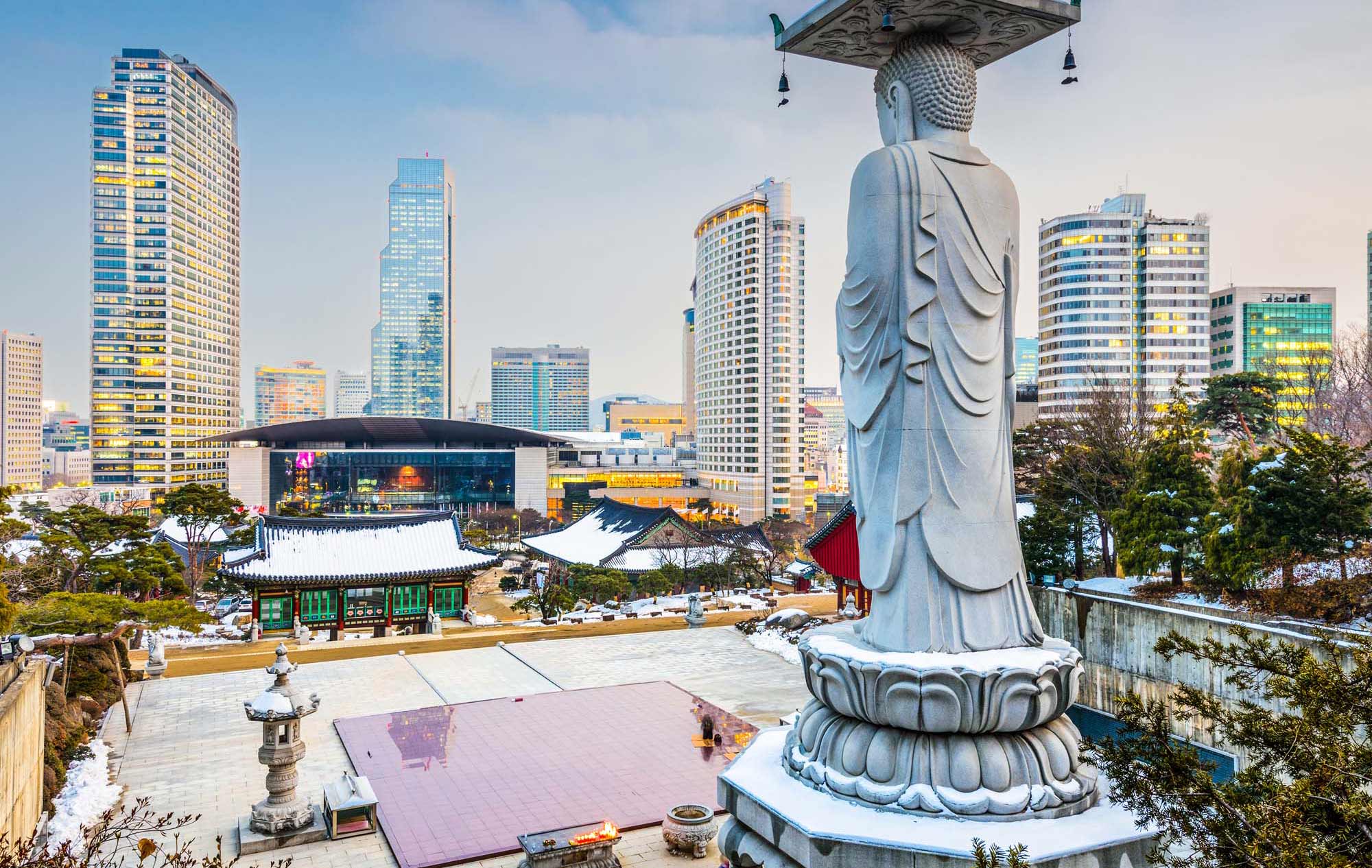
The number of days to spend in Seoul largely depends on your travel preferences and interests.
Seoul is a city with a lot to offer, from historical sites and cultural experiences to shopping and entertainment. Here are some suggestions based on the type of traveler you are:
First-time visitors
If you’re a first-time visitor, I recommend staying in Seoul for at least 4-5 days.
This will give you enough time to visit the major tourist attractions, such as the Gyeongbokgung Palace, Namsan Tower, and Myeongdong shopping district.
It will also give you time to experience some of the cultural aspects of Seoul, such as trying traditional Korean food, visiting a traditional market, and attending a cultural show.
Culture and history lovers
If you’re interested in Korean history and culture, you may want to stay for a week or more to fully explore Seoul’s cultural offerings.
In addition to the major attractions, you can also visit museums such as the National Museum of Korea, the War Memorial of Korea, and the Seoul Museum of History.
You can also explore traditional neighborhoods such as Bukchon Hanok Village and Insadong, and attend cultural events such as traditional dance performances and tea ceremonies.
Foodies
Seoul is a food lover’s paradise, with a vast array of delicious and unique Korean dishes to try.
If you’re a foodie, I recommend staying for at least a week to sample the city’s diverse culinary offerings.
You can try traditional Korean dishes such as bibimbap, kimchi, and bulgogi, as well as modern Korean fusion cuisine.
Don’t miss out on the street food stalls, night markets, and traditional markets such as Gwangjang Market and Noryangjin Fish Market.
Shopping enthusiasts
Seoul is a shopping mecca, with everything from high-end luxury brands to unique independent boutiques.
If you’re a shopping enthusiast, you may want to stay for at least 5-6 days to explore the city’s many shopping districts, such as Myeongdong, Gangnam, and Dongdaemun.
You can also visit the various department stores, duty-free shops, and underground shopping centers.
Best Areas to Stay
Seoul is a large city with many distinct neighborhoods, each with its own character and attractions.
The best area to stay in Seoul depends on your preferences and interests. Here are some of the most popular areas to stay in Seoul:
Gangnam
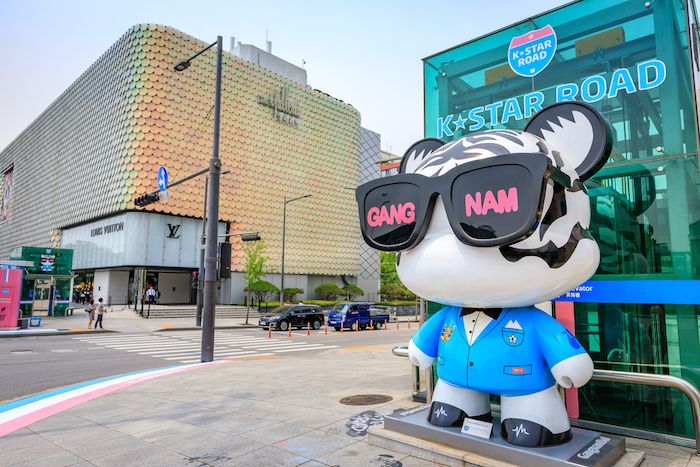 Located in the southern part of Seoul, Gangnam is a vibrant and affluent neighborhood known for its high-end shopping, nightlife, and business centers.
Located in the southern part of Seoul, Gangnam is a vibrant and affluent neighborhood known for its high-end shopping, nightlife, and business centers.
Gangnam is also home to several parks and cultural attractions, including the COEX Convention & Exhibition Center, the Seoul Arts Center, and the Bongeunsa Temple.
Myeongdong
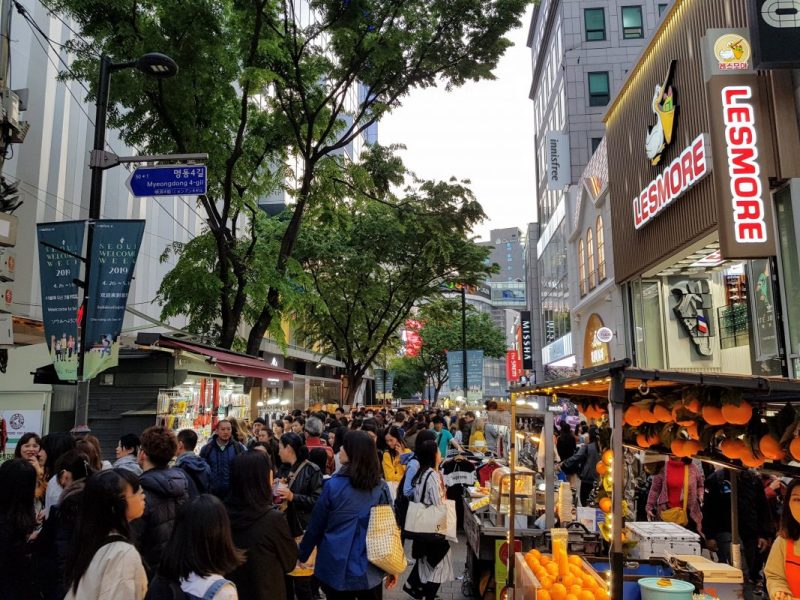 Located in the heart of Seoul, Myeongdong is a bustling shopping district with a mix of traditional markets, international brands, and street food stalls.
Located in the heart of Seoul, Myeongdong is a bustling shopping district with a mix of traditional markets, international brands, and street food stalls.
Myeongdong is also a popular tourist destination with many cultural landmarks, such as the Namsan Tower, the Myeongdong Cathedral, and the Gyeongbokgung Palace.
Insadong
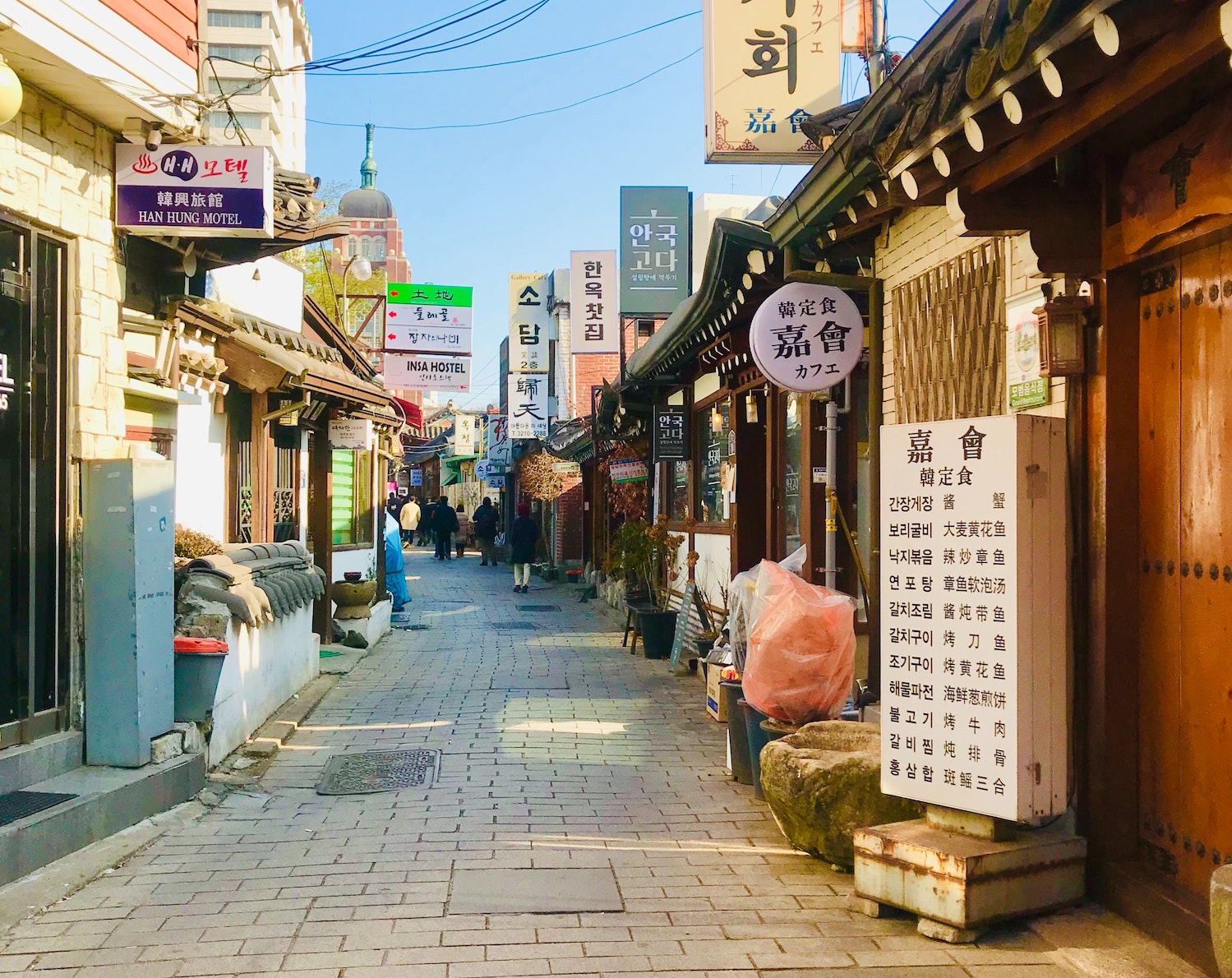 Located in central Seoul, Insadong is a cultural hub known for its traditional arts and crafts, tea houses, and galleries.
Located in central Seoul, Insadong is a cultural hub known for its traditional arts and crafts, tea houses, and galleries.
The neighborhood is home to many traditional Korean restaurants and shops, as well as cultural landmarks such as the Jogyesa Temple and the National Palace Museum of Korea.
Hongdae
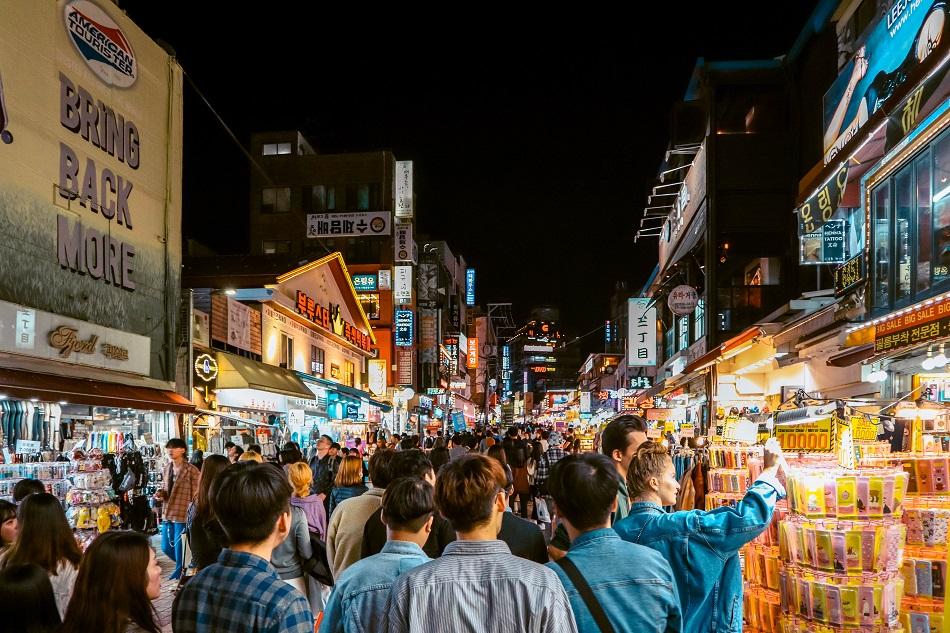 Located in western Seoul, Hongdae is a trendy and youthful neighborhood known for its nightlife, live music, and street performances.
Located in western Seoul, Hongdae is a trendy and youthful neighborhood known for its nightlife, live music, and street performances.
Hongdae is also home to several art galleries and independent shops, as well as the Hongik University.
Itaewon
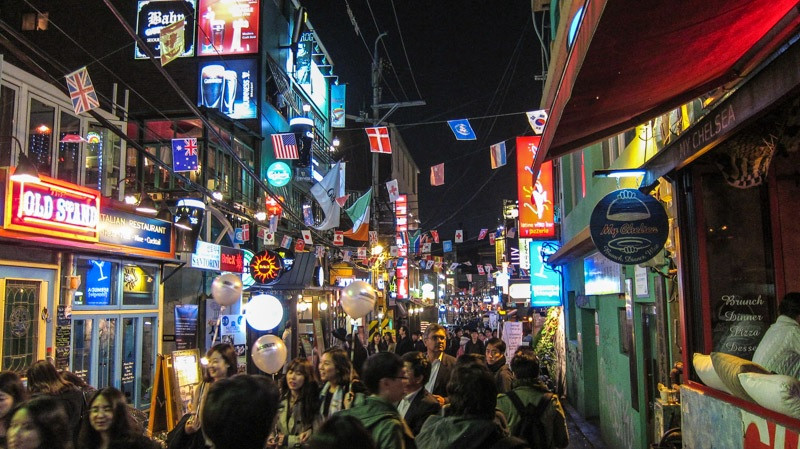 Located in central Seoul, Itaewon is a multicultural district with a diverse range of restaurants, cafes, and shops.
Located in central Seoul, Itaewon is a multicultural district with a diverse range of restaurants, cafes, and shops.
Itaewon is popular among international travelers and expats, and is known for its lively nightlife scene.
Bukchon Hanok Village
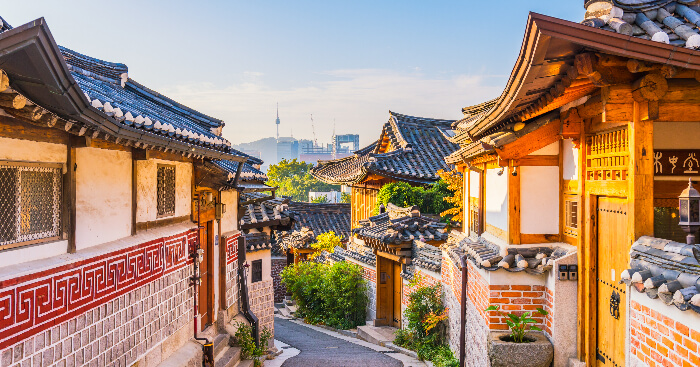 Located in central Seoul, Bukchon Hanok Village is a traditional neighborhood with many well-preserved hanok (traditional Korean houses).
Located in central Seoul, Bukchon Hanok Village is a traditional neighborhood with many well-preserved hanok (traditional Korean houses).
Staying in a hanok guesthouse in Bukchon is a unique way to experience traditional Korean culture and architecture.
When choosing where to stay in Seoul, consider your budget, preferred location, and the attractions you want to visit.
Each neighborhood offers a different experience, so it’s a good idea to research and choose the area that best suits your interests.
Attractions
Gyeongbokgung Palace
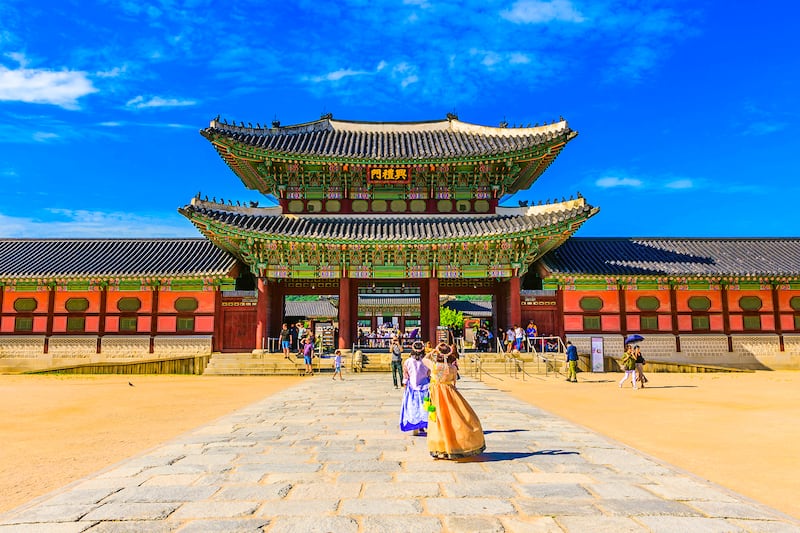 This iconic palace is a testament to Korea’s rich history and culture. It was built in the 14th century and served as the main residence of the Joseon Dynasty.
This iconic palace is a testament to Korea’s rich history and culture. It was built in the 14th century and served as the main residence of the Joseon Dynasty.
The palace complex is massive, and visitors can witness the changing of the guard ceremony and explore the various pavilions and gardens within the palace grounds. It’s a great place to learn about Korean history and architecture.
Namsan Tower
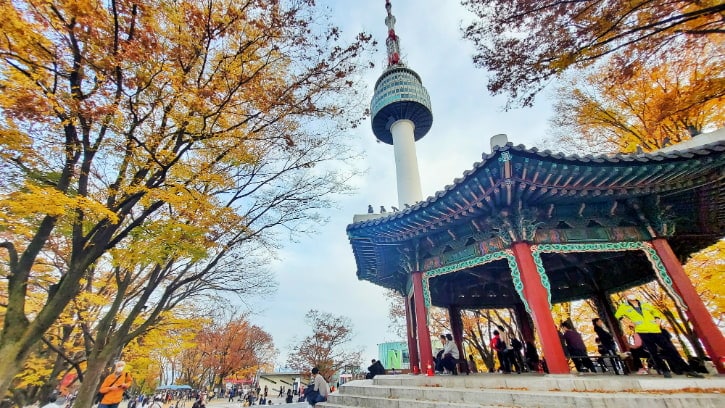 Located on top of Namsan Mountain, Namsan Tower offers panoramic views of Seoul’s skyline.
Located on top of Namsan Mountain, Namsan Tower offers panoramic views of Seoul’s skyline.
Visitors can take a cable car up to the top of the tower, which also features a restaurant and observation deck.
It’s a popular spot for couples to affix locks as a symbol of their love.
Myeong-dong
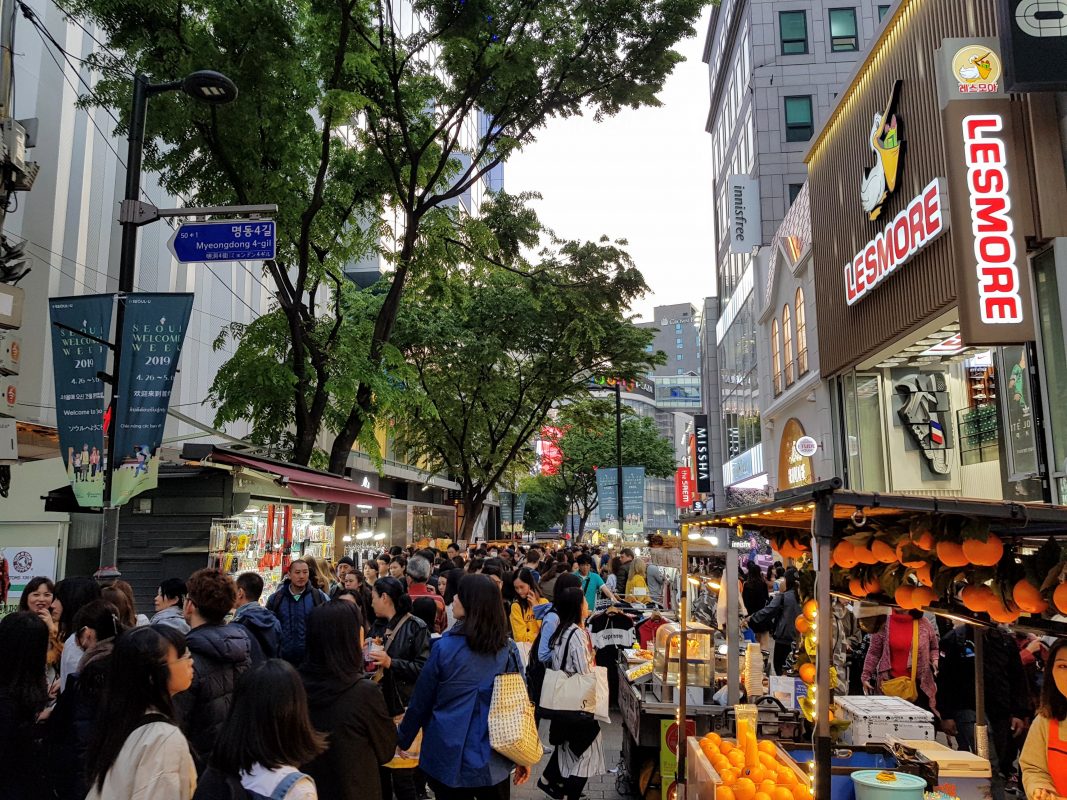 This bustling shopping district is a must-visit for fashion lovers. It’s home to countless shops and boutiques selling everything from skincare products to trendy clothing.
This bustling shopping district is a must-visit for fashion lovers. It’s home to countless shops and boutiques selling everything from skincare products to trendy clothing.
The street food scene in Myeong-dong is also worth experiencing, with vendors selling everything from Korean fried chicken to tteokbokki (spicy rice cakes).
Bukchon Hanok Village
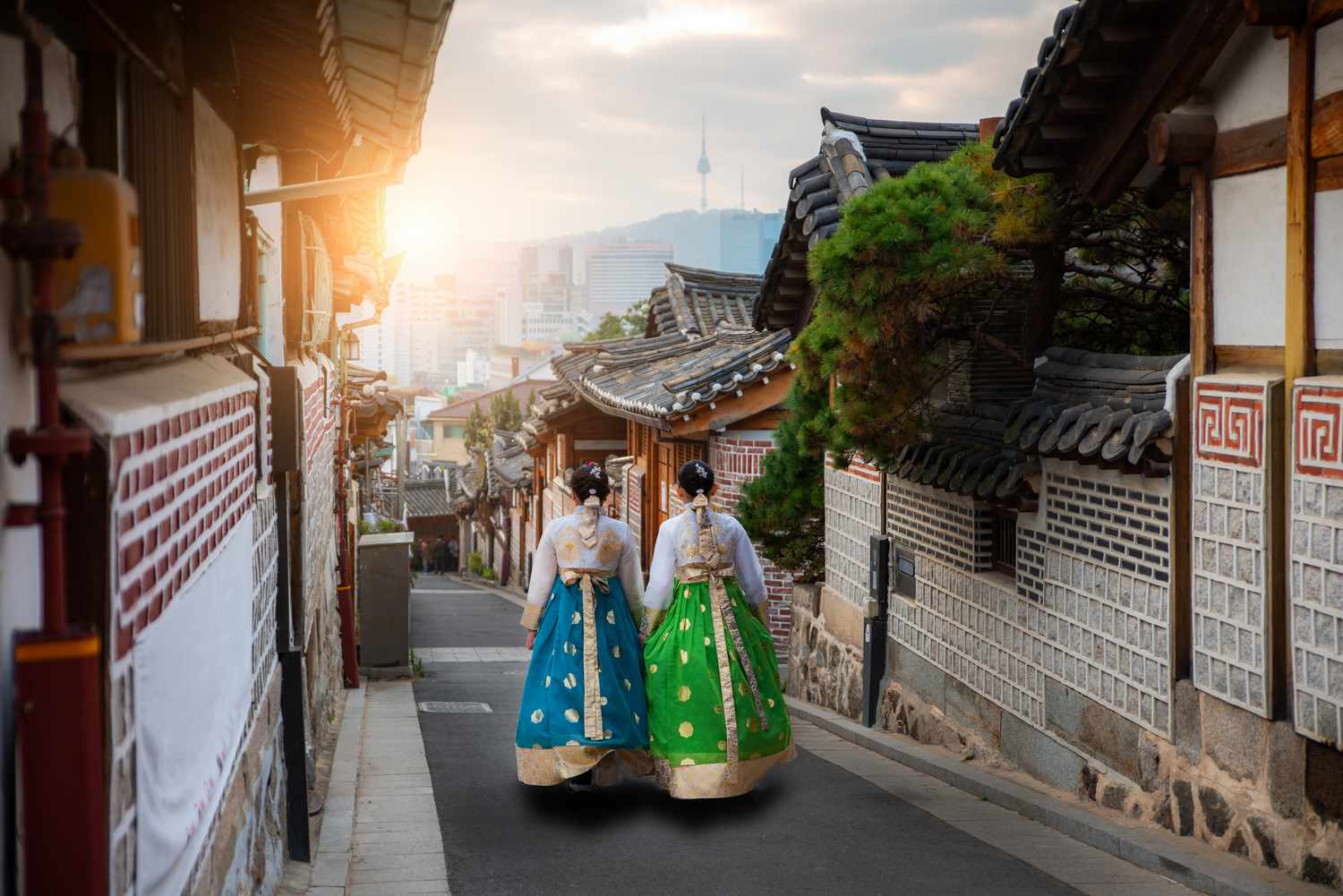 This well-preserved traditional village showcases the traditional architecture and way of life of Korea’s past.
This well-preserved traditional village showcases the traditional architecture and way of life of Korea’s past.
Visitors can take a stroll through the narrow alleyways and see the beautiful hanok (traditional Korean houses).
Many of these houses have been turned into galleries, cafes, and shops, making it a great place to soak up some culture.
Namdaemun Market
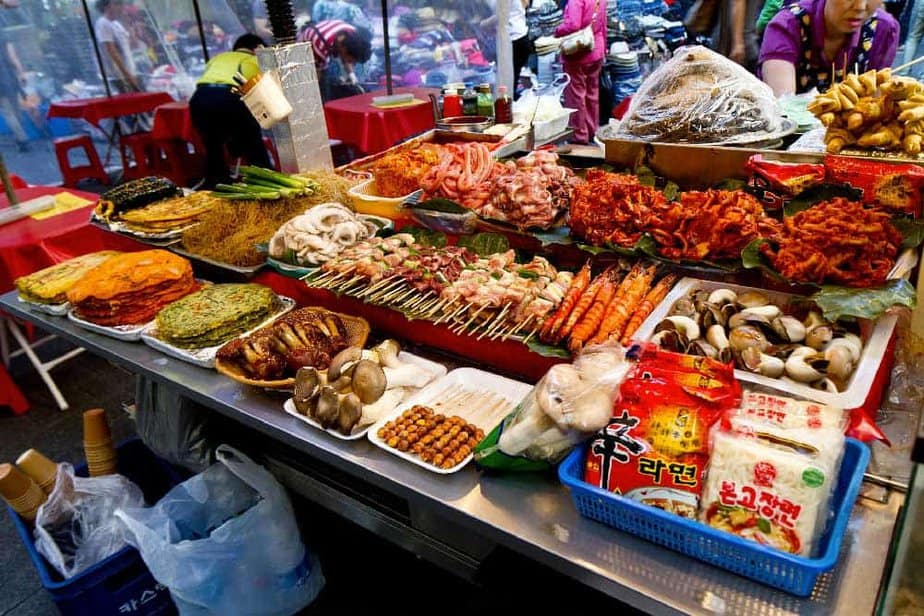 One of the largest traditional markets in Seoul, Namdaemun is a great place to experience the vibrant street food scene and pick up souvenirs.
One of the largest traditional markets in Seoul, Namdaemun is a great place to experience the vibrant street food scene and pick up souvenirs.
The market has been around for over 600 years and is known for its affordable prices and unique products.
Gwangjang Market
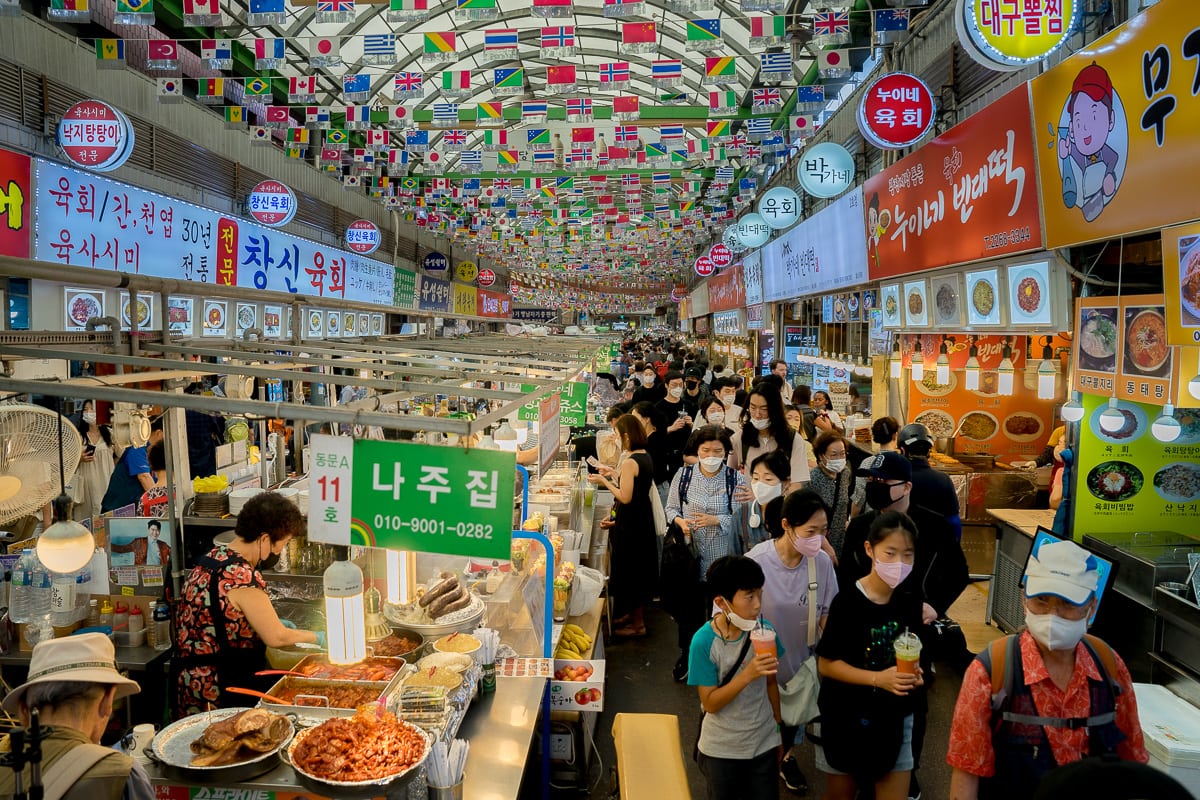 Another famous market in Seoul, Gwangjang is known for its street food and traditional Korean textiles.
Another famous market in Seoul, Gwangjang is known for its street food and traditional Korean textiles.
The market has been around since the early 1900s and is a great place to try dishes like bindaetteok (mung bean pancakes) and mayak gimbap (addictive seaweed rice rolls).
Changdeokgung Palace
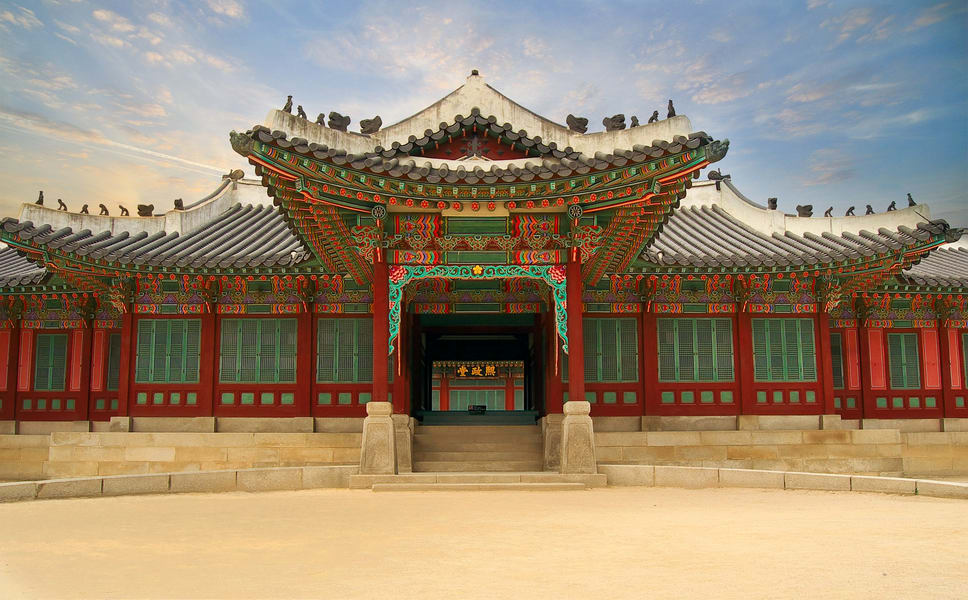 This palace is known for its beautiful gardens and architecture. It was built in the 15th century and served as a secondary residence for the royal family.
This palace is known for its beautiful gardens and architecture. It was built in the 15th century and served as a secondary residence for the royal family.
The palace is a UNESCO World Heritage Site and is a great place to learn about Korean history and culture.
Seoul Tower
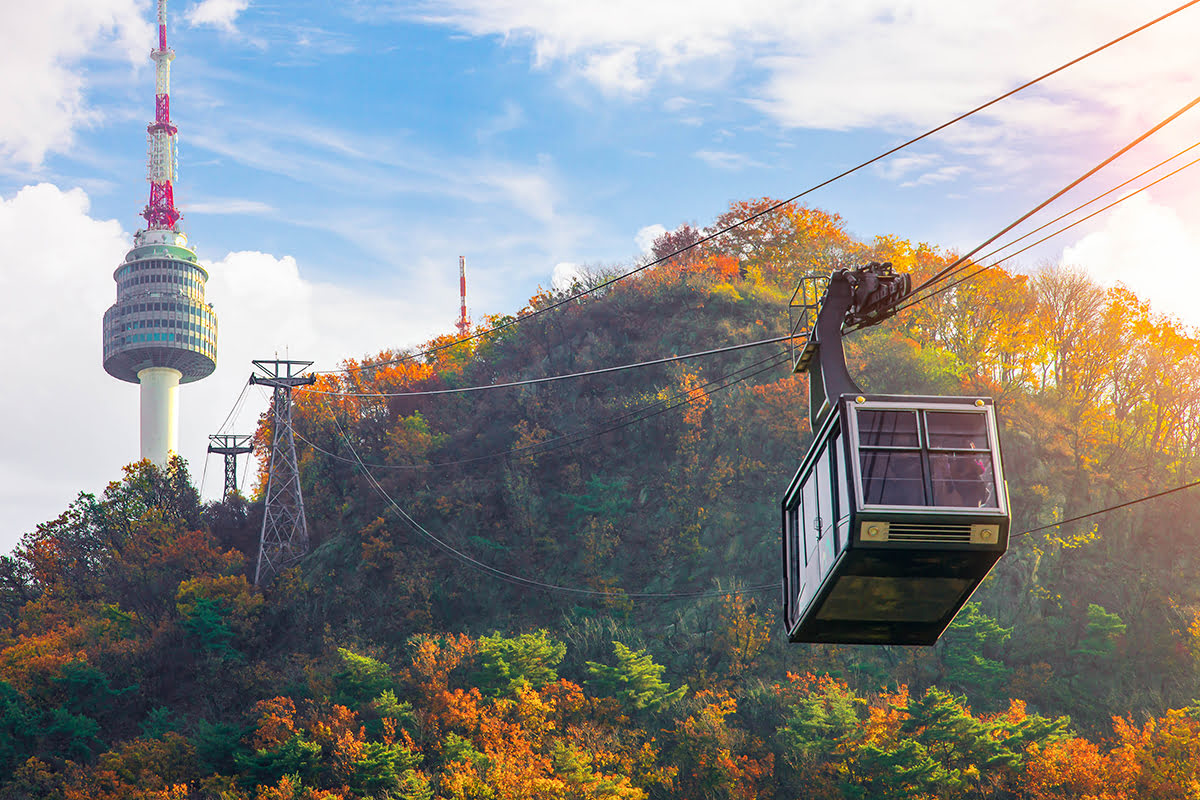 Similar to Namsan Tower, Seoul Tower offers panoramic views of the city.
Similar to Namsan Tower, Seoul Tower offers panoramic views of the city.
The tower is located on top of Mount Namsan and features a restaurant, observation deck, and gift shop. Visitors can take a cable car or hike up to the top of the mountain.
Dongdaemun Design Plaza
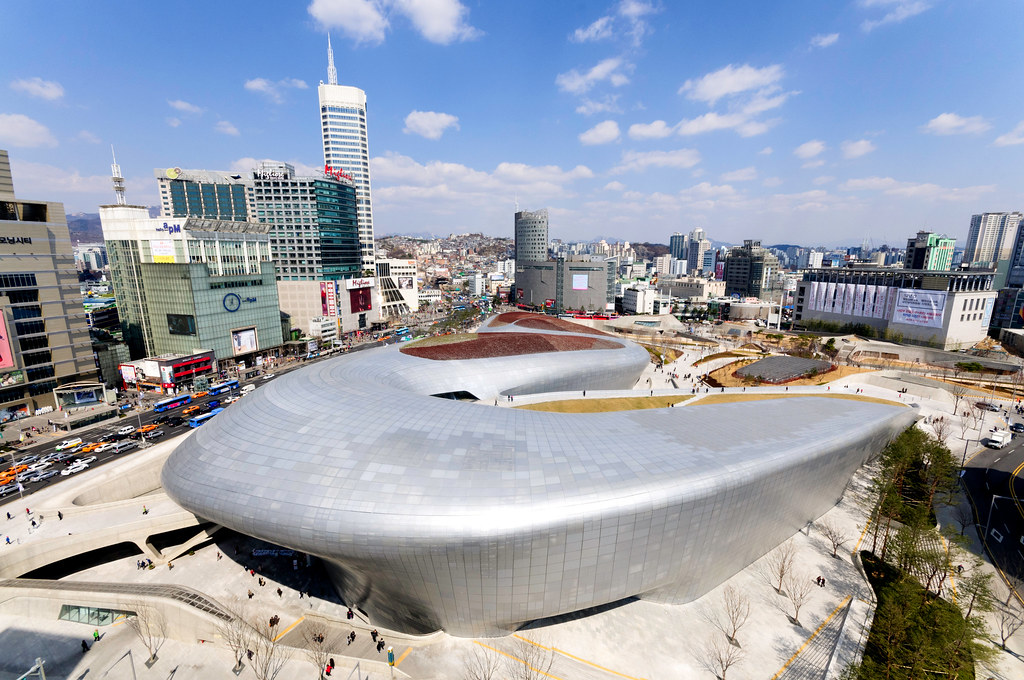
This futuristic building is a great place to appreciate contemporary architecture.
It houses exhibition spaces, a museum, and a design market. The plaza is also home to many fashion events and shows throughout the year.
Insadong
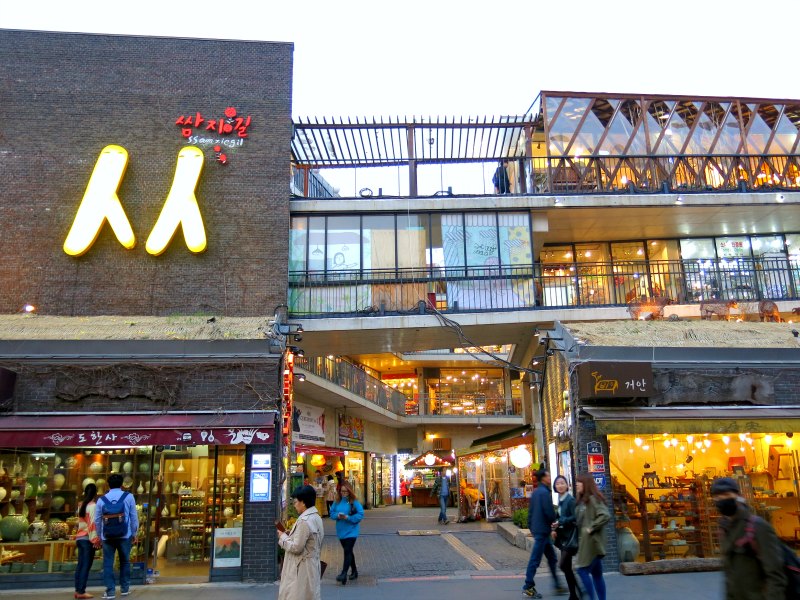 This neighborhood is known for its traditional Korean culture and arts. It’s a great place to pick up unique souvenirs and try traditional Korean tea.
This neighborhood is known for its traditional Korean culture and arts. It’s a great place to pick up unique souvenirs and try traditional Korean tea.
Insadong also has many galleries and exhibitions showcasing contemporary Korean art.
Korean Food
Korean cuisine is known for its bold flavors, use of fermented ingredients, and emphasis on fresh vegetables and grains. Here are some of the most popular Korean dishes and ingredients:
Kimchi
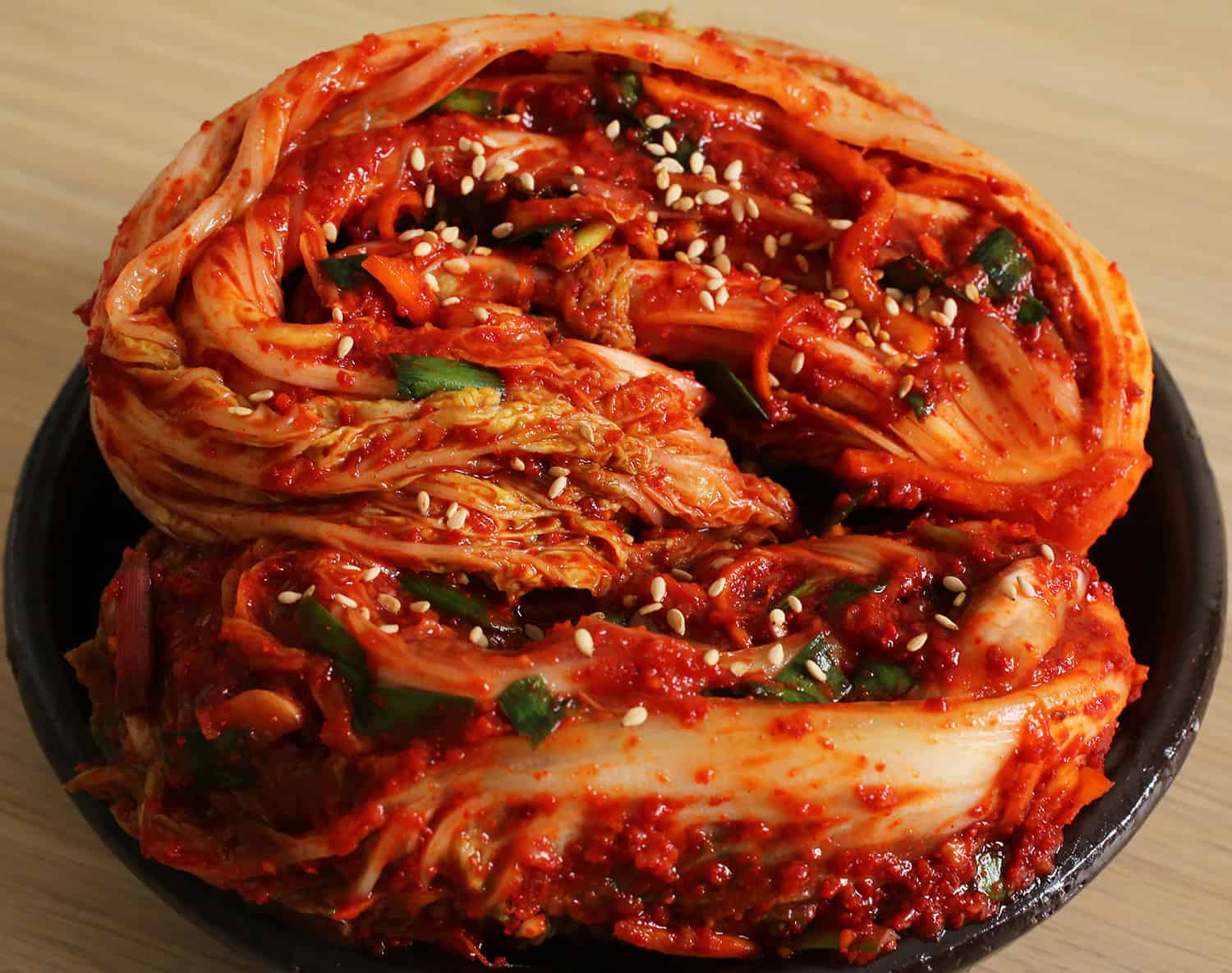 Perhaps the most famous Korean dish, kimchi is a fermented vegetable dish made with a variety of vegetables such as cabbage, radish, and cucumber, and flavored with garlic, ginger, and chili peppers.
Perhaps the most famous Korean dish, kimchi is a fermented vegetable dish made with a variety of vegetables such as cabbage, radish, and cucumber, and flavored with garlic, ginger, and chili peppers.
It’s served as a side dish with almost every Korean meal, and is a staple in Korean cuisine.
Bibimbap
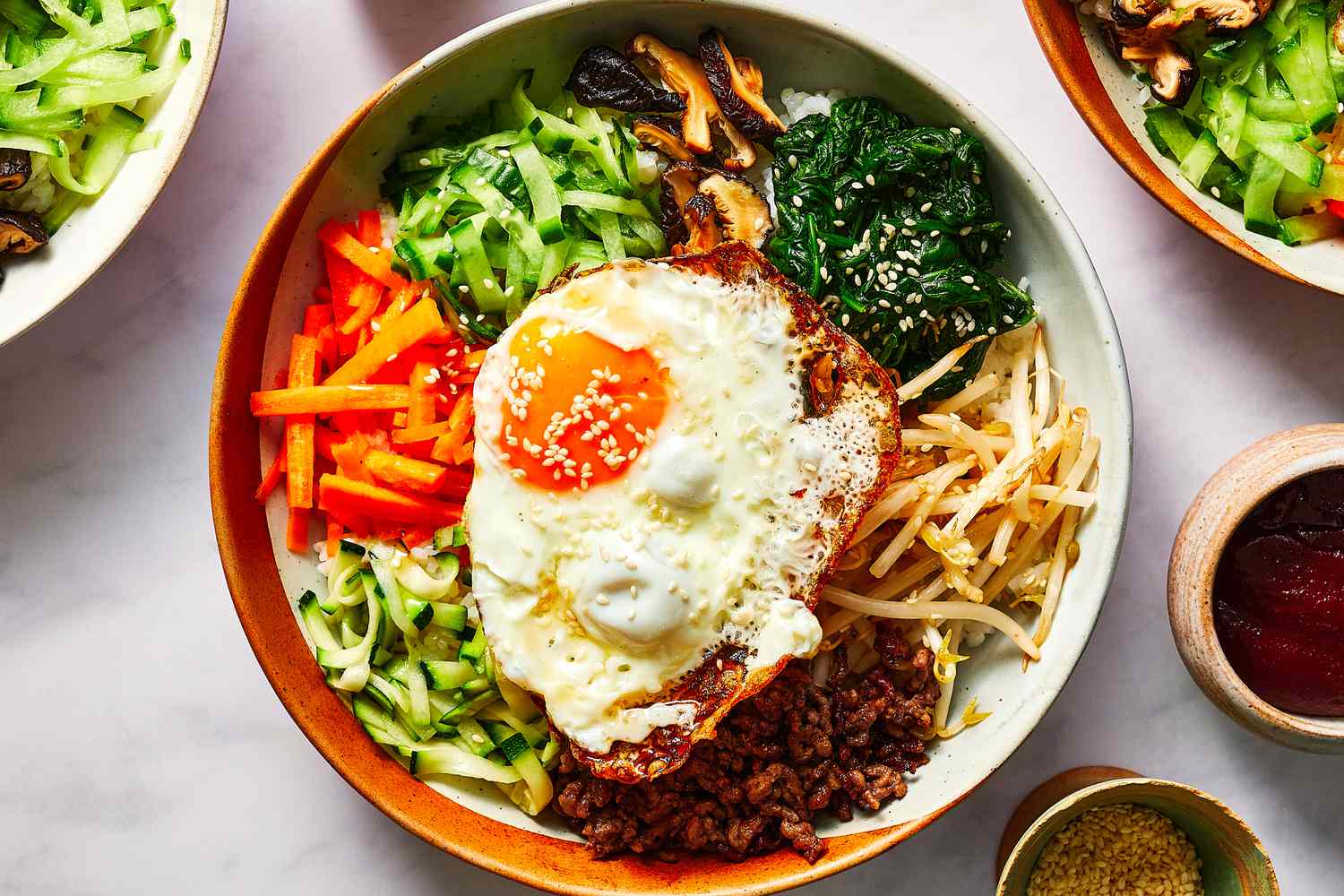 A popular Korean rice dish, bibimbap consists of a bowl of rice topped with sautéed vegetables, meat (usually beef), egg, and gochujang (spicy red pepper paste).
A popular Korean rice dish, bibimbap consists of a bowl of rice topped with sautéed vegetables, meat (usually beef), egg, and gochujang (spicy red pepper paste).
The dish is mixed together before eating, creating a flavorful and hearty meal.
Bulgogi
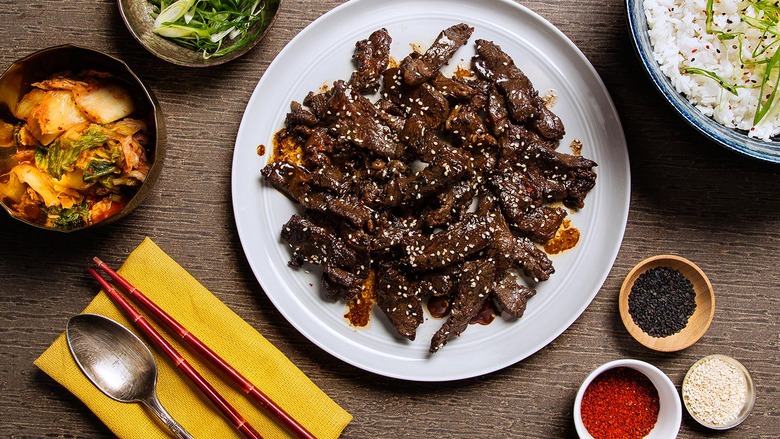 A Korean barbecue dish made with thinly sliced marinated beef or pork, bulgogi is cooked on a grill or stove and often served with rice, lettuce leaves, and other side dishes.
A Korean barbecue dish made with thinly sliced marinated beef or pork, bulgogi is cooked on a grill or stove and often served with rice, lettuce leaves, and other side dishes.
Japchae
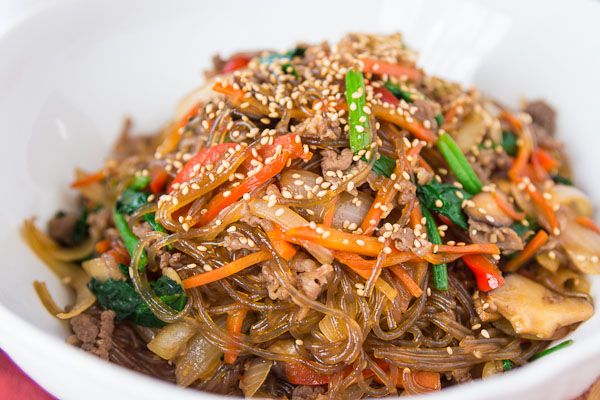 A stir-fried noodle dish made with sweet potato starch noodles, vegetables, and meat (usually beef or pork).
A stir-fried noodle dish made with sweet potato starch noodles, vegetables, and meat (usually beef or pork).
The dish is flavored with soy sauce, sesame oil, and other seasonings, and is often served at special occasions such as weddings and birthdays.
Tteokbokki
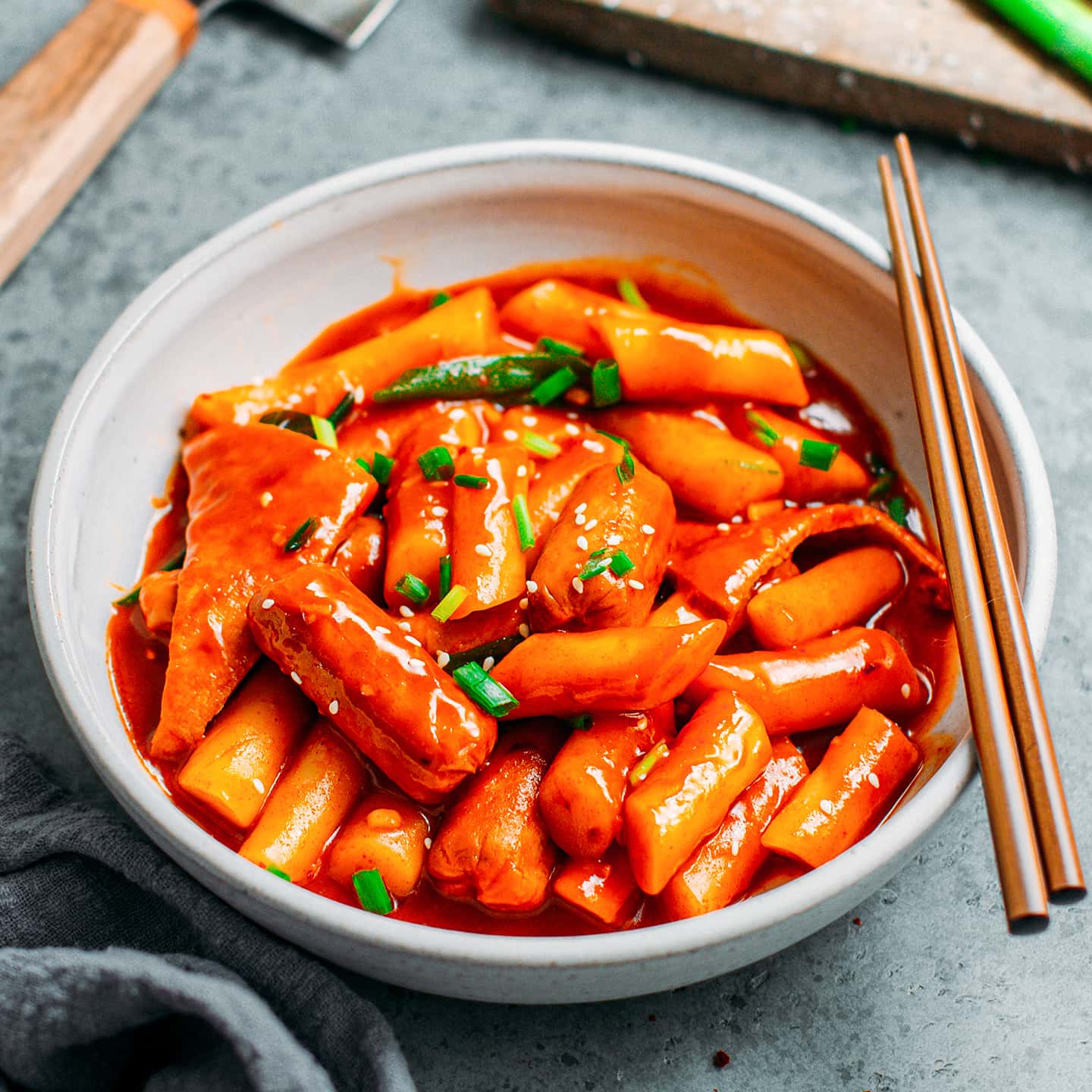 A popular street food snack, tteokbokki is made with cylindrical rice cakes and a spicy sauce made with gochujang (red pepper paste). Other ingredients such as fish cakes and boiled eggs may also be added.
A popular street food snack, tteokbokki is made with cylindrical rice cakes and a spicy sauce made with gochujang (red pepper paste). Other ingredients such as fish cakes and boiled eggs may also be added.
Samgyetang
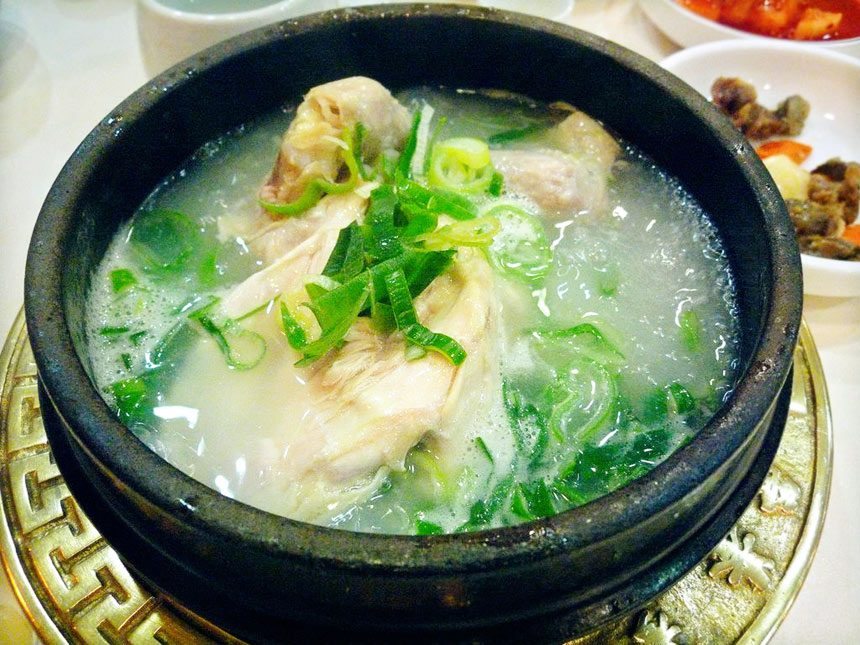 A Korean chicken soup made with a whole chicken stuffed with glutinous rice, garlic, and jujube (red date), samgyetang is a popular summer dish believed to have restorative properties.
A Korean chicken soup made with a whole chicken stuffed with glutinous rice, garlic, and jujube (red date), samgyetang is a popular summer dish believed to have restorative properties.
Korean Fried Chicken
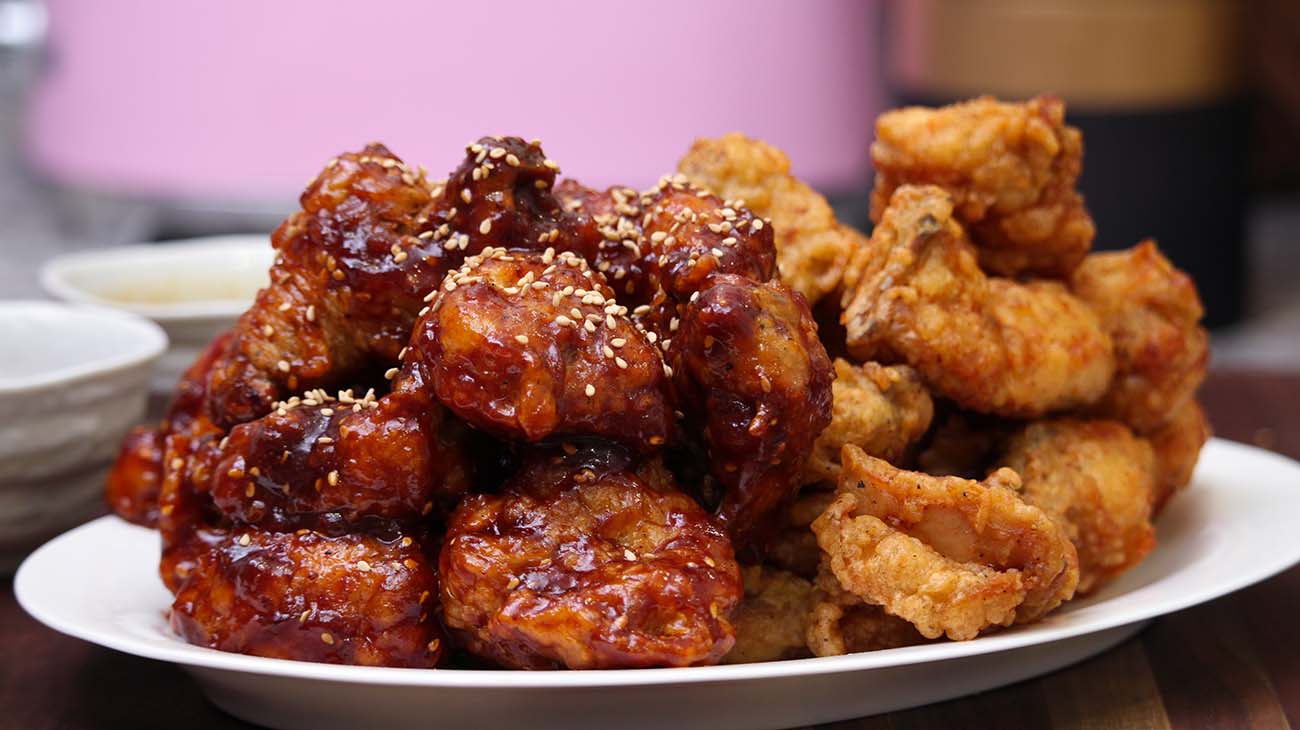 A recent addition to Korean cuisine, Korean fried chicken has gained popularity around the world.
A recent addition to Korean cuisine, Korean fried chicken has gained popularity around the world.
The chicken is double-fried to create a crispy exterior, and is often served with a variety of sauces such as soy garlic and spicy.
Korean cuisine also places a heavy emphasis on side dishes, or banchan.
These are small dishes served alongside the main dish, and can include kimchi, pickled vegetables, tofu, and other small dishes.
Korean meals are often served family-style, with several dishes and side dishes shared among the table.
In addition to the dishes mentioned above, there are many other unique and delicious Korean dishes worth trying.
Korean cuisine also includes a variety of soups, stews, and noodle dishes, as well as seafood dishes made with fresh ingredients from Korea’s coastal waters.
How to Get Around
Seoul is a sprawling city with a well-developed public transportation system that makes it easy for visitors to get around. Here are some of the best ways to navigate the city:
Subway
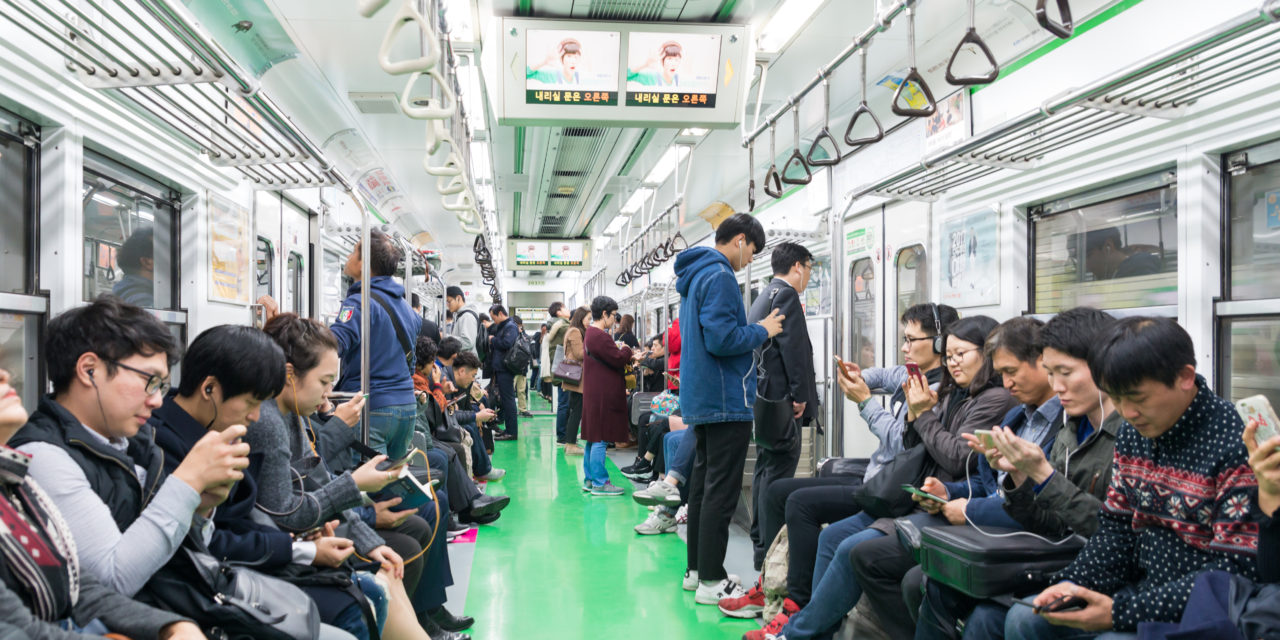 Seoul’s subway system is one of the most extensive in the world, with 22 lines that cover all parts of the city.
Seoul’s subway system is one of the most extensive in the world, with 22 lines that cover all parts of the city.
The subway is efficient, reliable, and affordable, with fares starting at 1,250 KRW (about 1 USD) for a single ride.
English signage and announcements make it easy for non-Korean speakers to navigate the system. You can find a subway map here.
Bus
Seoul’s bus system is also extensive, with both traditional and modern buses that cover most areas of the city.
Buses are a good option for short trips or for destinations not served by the subway.
Fares start at 1,200 KRW (about 1 USD) for a single ride, and payment is made using a T-money card or cash.
Taxi
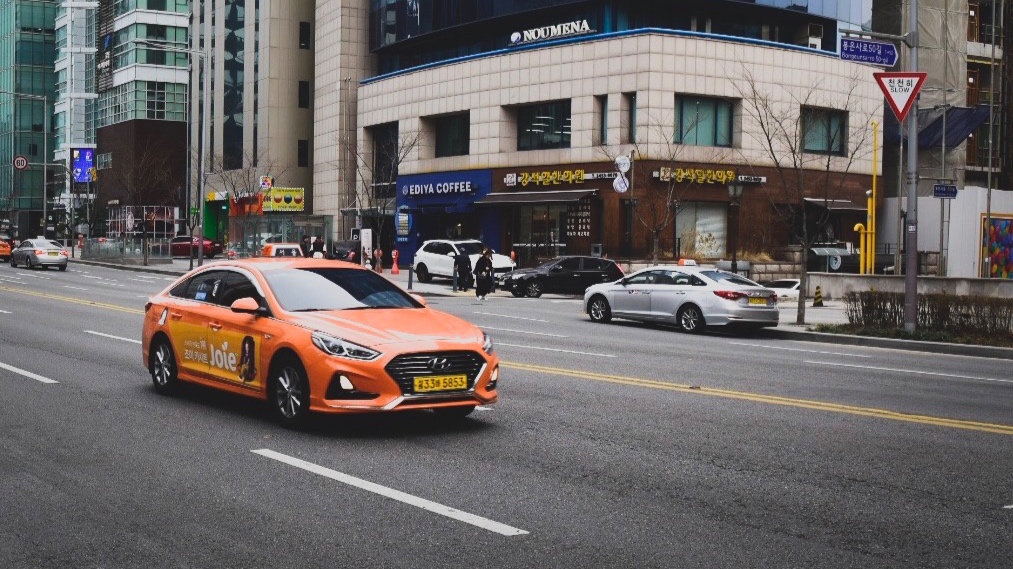 Taxis are a convenient way to get around Seoul, especially for short trips or when the subway or bus is not a convenient option.
Taxis are a convenient way to get around Seoul, especially for short trips or when the subway or bus is not a convenient option.
Taxis are metered, with fares starting at 3,800 KRW (about 3 USD) for the first 2 kilometers, and an additional 100 KRW (about 0.08 USD) for each additional 144 meters.
Taxis can be hailed on the street or booked using a ride-hailing app such as KakaoTaxi or Uber.
Bicycle
Seoul has a bike-sharing system called Ttareungyi, which allows users to rent bicycles from various stations around the city.
The bikes are easy to use and are a fun way to explore Seoul’s parks and neighborhoods.
Rental fees start at 1,000 KRW (about 0.80 USD) for 30 minutes, and payment is made using a T-money card or credit card.
Walking
Walking is a great way to explore Seoul’s neighborhoods and get a feel for the city’s culture and history.
Many of Seoul’s main attractions are located within walking distance of each other, and there are plenty of pedestrian-friendly areas such as Cheonggyecheon Stream and the Bukchon Hanok Village.
When using public transportation in Seoul, it’s important to note that rush hour can be very crowded, especially on the subway. If possible, try to avoid traveling during peak hours (7-9 am and 5-7 pm) to avoid the crowds.
Also, consider purchasing a T-money card, which can be used on all forms of public transportation in Seoul and offers a small discount on fares.
Tips for Families Traveling to Seoul
Plan ahead
Before you arrive, research the top attractions in Seoul and create a rough itinerary for your trip.
This will help you make the most of your time and ensure that you don’t miss any must-see sights.
Use public transportation
Seoul has an extensive and efficient public transportation system, including subways and buses, which can help you get around the city quickly and easily. It is also cost-effective and can save you money on taxi fares.
Visit family-friendly attractions
Seoul has many attractions that are perfect for families, such as Lotte World theme park, the Namsan Tower, and the Children’s Grand Park.
There are also many museums and cultural sites that are both educational and entertaining for children.
Learn some basic Korean phrases
While many people in Seoul speak English, it can be helpful to learn some basic Korean phrases to help you get around and communicate with locals.
Pack for the Weather
Seoul can get quite hot and humid in the summer, so make sure to bring light, comfortable clothing. However, it can also get cold in the winter, so be sure to pack warm layers.
Day Trips From Seoul
Seoul is an exciting city with plenty to see and do, but if you want to escape the hustle and bustle for a day, there are several great day trips you can take. Here are some of the best day trips from Seoul:
DMZ (Demilitarized Zone) Tour
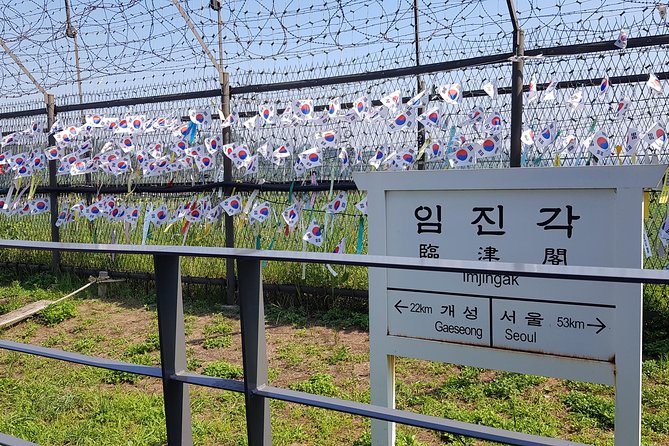 The DMZ is a heavily fortified area that separates North and South Korea, and it’s one of the most popular day trips from Seoul.
The DMZ is a heavily fortified area that separates North and South Korea, and it’s one of the most popular day trips from Seoul.
Visitors can take a guided tour to the Joint Security Area (JSA) and see the North Korean soldiers across the border.
You can also visit the Dora Observatory, the Third Infiltration Tunnel, and the Imjingak Park, which features a monument dedicated to the reunification of North and South Korea.
Suwon
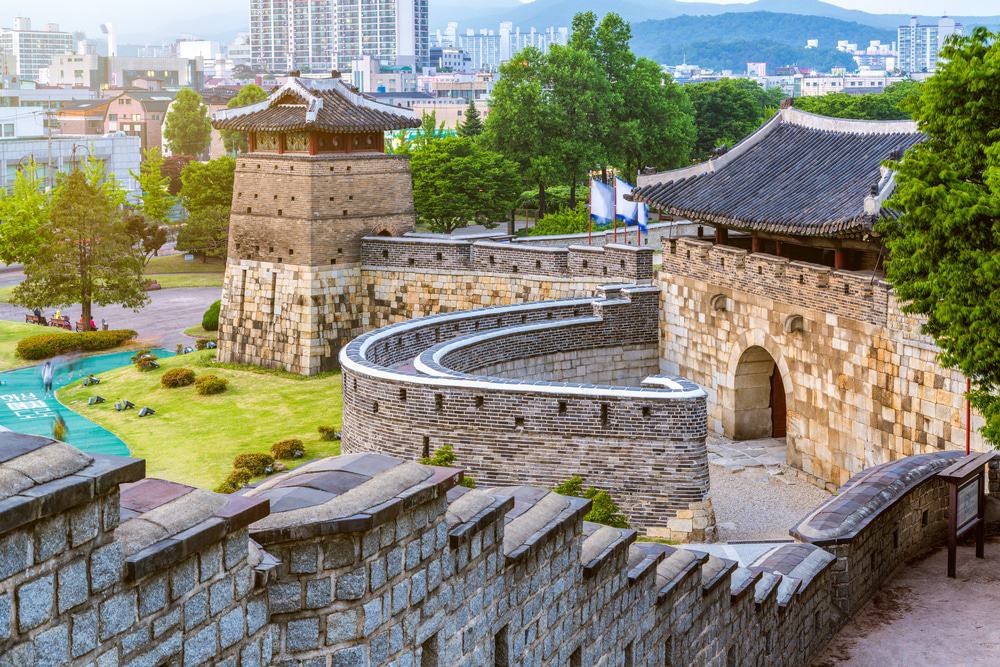 Suwon is a city located about 30 km south of Seoul, and it’s home to the UNESCO World Heritage site Hwaseong Fortress.
Suwon is a city located about 30 km south of Seoul, and it’s home to the UNESCO World Heritage site Hwaseong Fortress.
The fortress was built in the late 18th century and is a beautiful example of traditional Korean architecture.
Visitors can walk around the fortress walls, visit the various gates and pavilions, and enjoy the scenic surroundings.
Suwon also has a vibrant traditional market and a variety of restaurants serving delicious Korean cuisine.
Nami Island
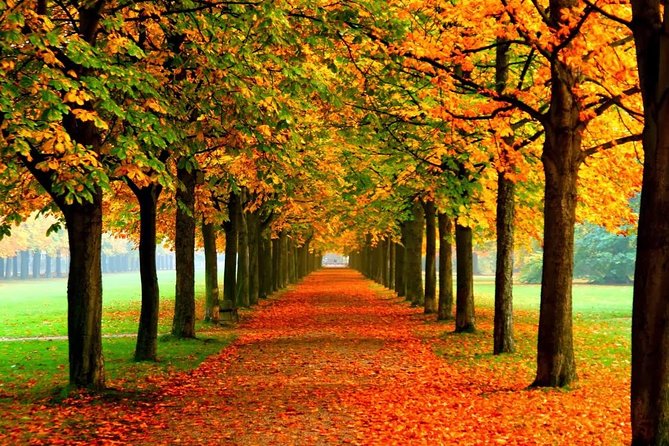 Nami Island is a small, picturesque island located about an hour outside of Seoul.
Nami Island is a small, picturesque island located about an hour outside of Seoul.
The island is famous for its stunning natural scenery, including tree-lined paths, gardens, and a beautiful lake.
Visitors can rent bicycles or take a leisurely stroll around the island and take in the scenery. Nami Island is also a popular filming location for Korean dramas and movies.
Jeonju
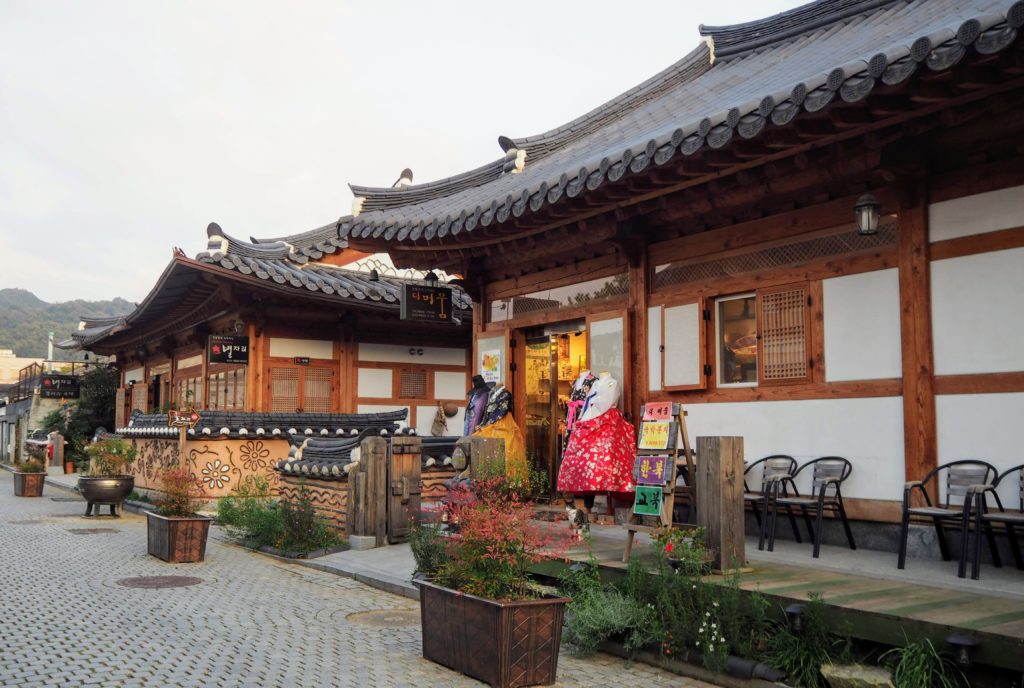 Jeonju is a city located about 180 km south of Seoul, and it’s famous for its delicious Korean food and traditional hanok (Korean-style) houses.
Jeonju is a city located about 180 km south of Seoul, and it’s famous for its delicious Korean food and traditional hanok (Korean-style) houses.
Visitors can explore the Hanok Village, which is filled with traditional houses, craft shops, and restaurants serving Jeonju’s famous bibimbap (a dish of rice, vegetables, and meat).
Jeonju also has several museums and historical sites, including the Jeondong Catholic Church and the Jeonju National Museum.
Incheon
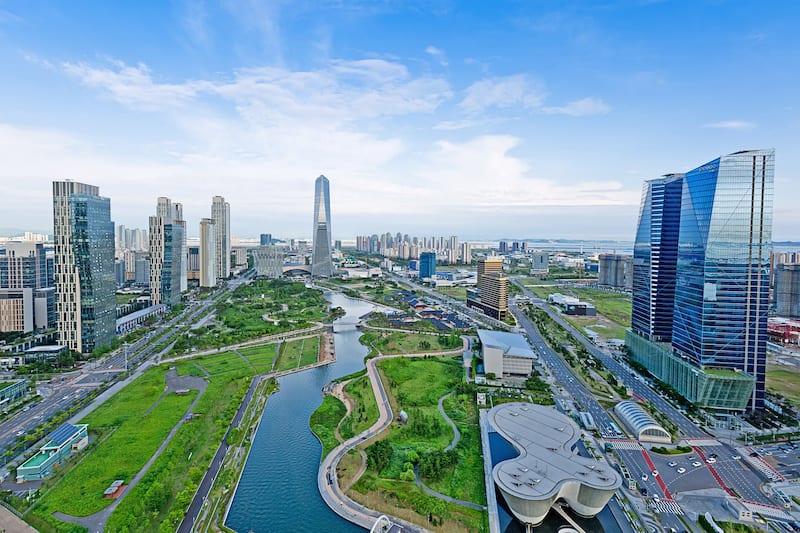 Incheon is a port city located about an hour outside of Seoul, and it’s known for its historic sites and beautiful beaches.
Incheon is a port city located about an hour outside of Seoul, and it’s known for its historic sites and beautiful beaches.
Visitors can explore the Songdo Central Park, which features a variety of gardens, walking paths, and water features.
Incheon also has several museums, including the Incheon Landing Operation Memorial Hall, which commemorates the historic Battle of Incheon during the Korean War.
Seoraksan National Park
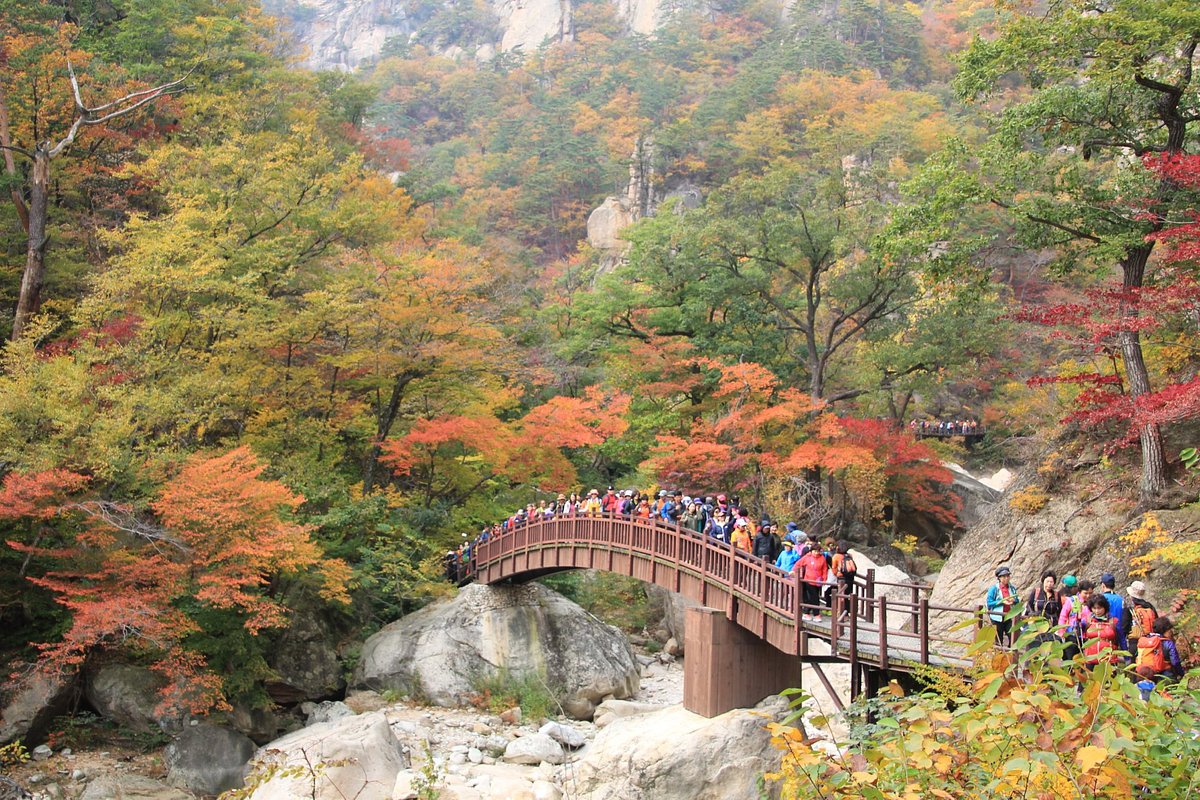 Seoraksan National Park is located about 200 km northeast of Seoul, and it’s one of Korea’s most famous national parks.
Seoraksan National Park is located about 200 km northeast of Seoul, and it’s one of Korea’s most famous national parks.
The park is known for its stunning natural scenery, including jagged peaks, waterfalls, and dense forests.
Visitors can hike along the various trails, visit the famous Buddhist temple, and enjoy the stunning scenery.
Gyeongju
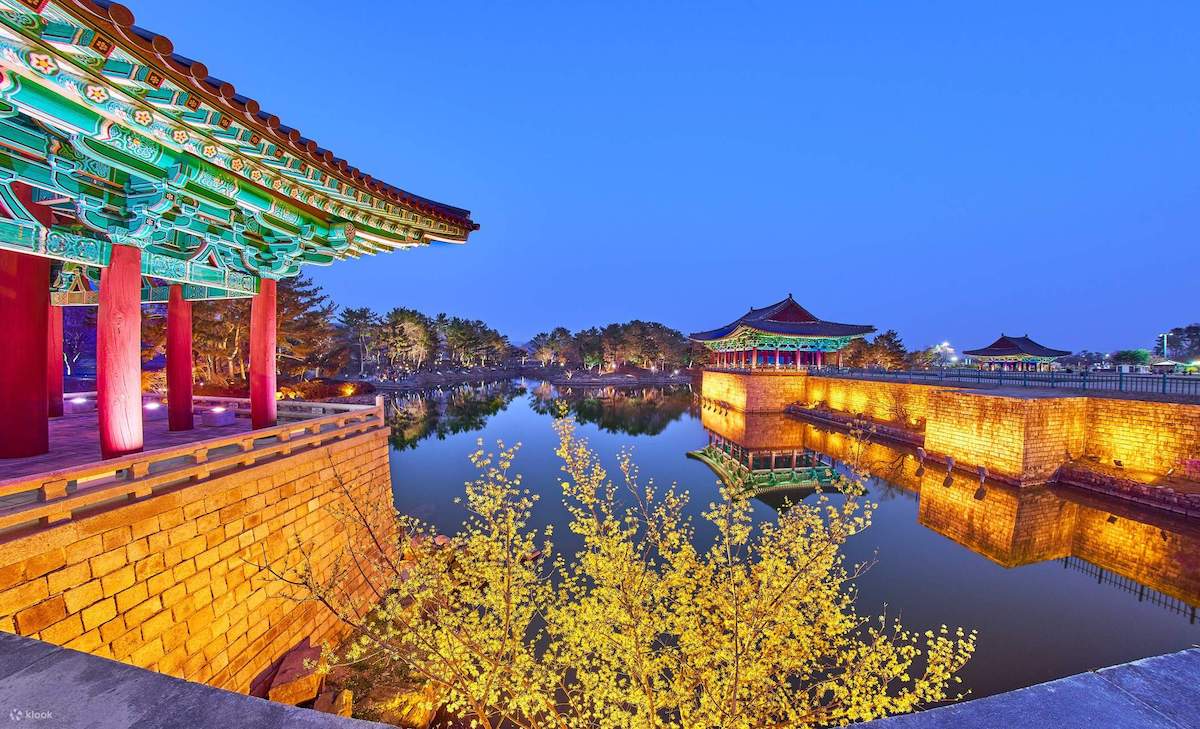 Gyeongju is a city located about 300 km southeast of Seoul, and it’s known for its rich history and cultural heritage.
Gyeongju is a city located about 300 km southeast of Seoul, and it’s known for its rich history and cultural heritage.
Visitors can explore the various historical sites, including the UNESCO World Heritage-listed Bulguksa Temple and the ancient tomb mounds of Daereungwon.
Gyeongju also has a variety of museums, traditional markets, and restaurants serving delicious Korean cuisine.
In conclusion, Seoul is a vibrant and exciting city that offers visitors a unique blend of traditional and modern Korean culture.
From exploring ancient palaces and temples to enjoying the latest trends in fashion and entertainment, there is no shortage of things to see and do in Seoul.
With its friendly locals, delicious cuisine, and efficient transportation system, Seoul is a destination that should be on everyone’s travel bucket list.
Whether you’re a history buff, a foodie, or just looking for an adventure, Seoul has something to offer for everyone.
So pack your bags, book your tickets, and get ready for an unforgettable trip to this incredible city.
Be sure to check out our vlog The Go To Family. Connect with us on Instagram, Twitter, and Pinterest !


